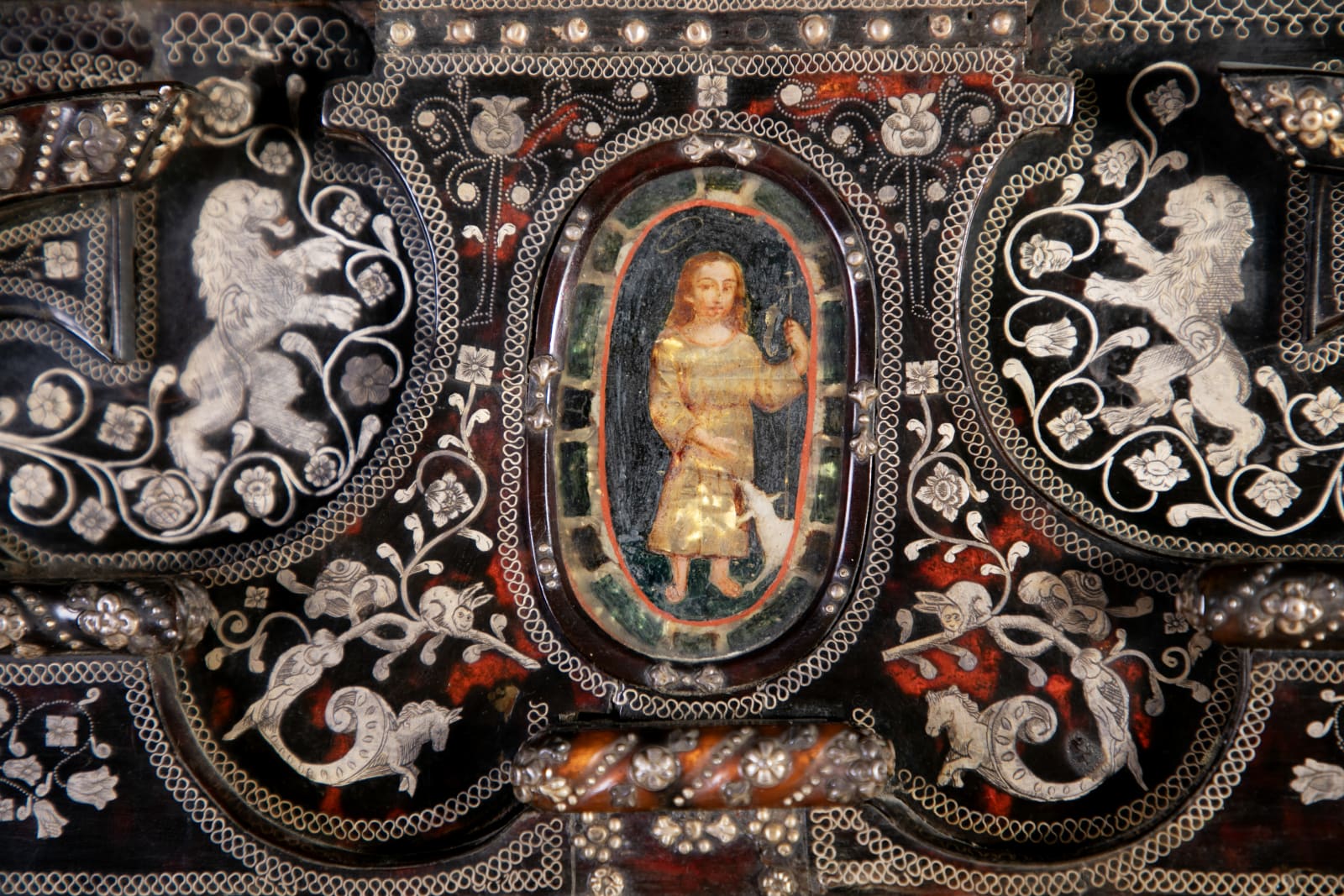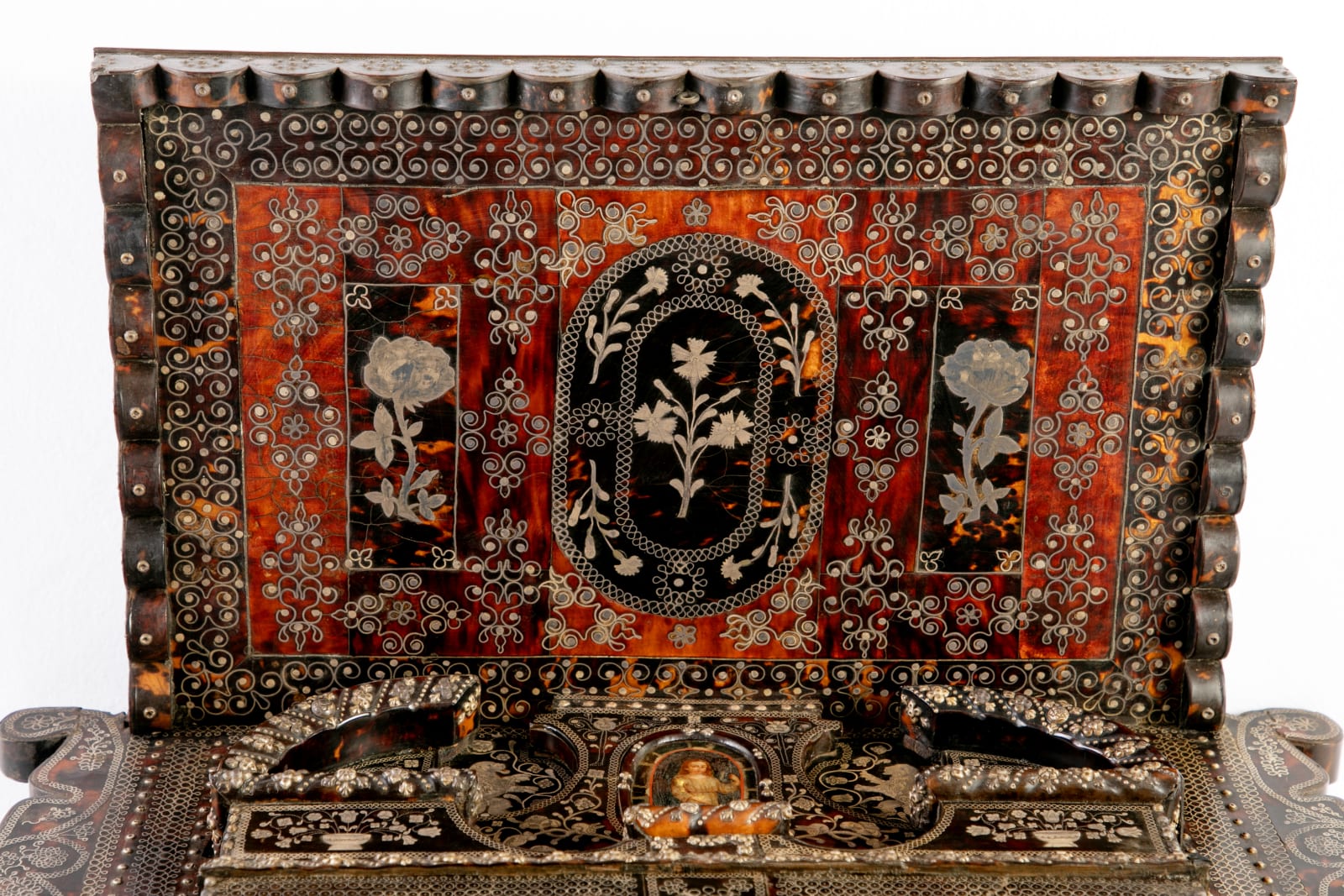Domestic Oratory
Guatemala, late 17th century - early 18th century
Wood, tortoiseshell, silver and bone
Wood, tortoiseshell, silver and bone
H: 79.5 cm; W: 52 cm; D: 28 cm
Further images
-
(View a larger image of thumbnail 1
)
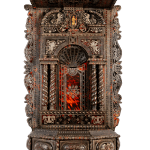
-
(View a larger image of thumbnail 2
)

-
(View a larger image of thumbnail 3
)

-
(View a larger image of thumbnail 4
)
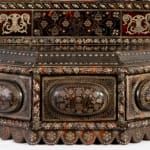
-
(View a larger image of thumbnail 5
)

-
(View a larger image of thumbnail 6
)

-
(View a larger image of thumbnail 7
)

-
(View a larger image of thumbnail 8
)
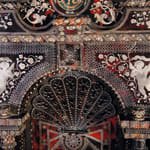
The Manila Galleon (1565-1815) was a key trade route linking Asia, America, and Europe, influencing Latin American art with a blend of Asian, indigenous, and European elements. A Guatemalan domestic oratory from the late 17th to early 18th century exemplifies this fusion, combining Baroque ornamentation with tortoiseshell and silver. The altar, used for daily prayer, symbolizes both religious devotion and elite status. Its intricate design, featuring Solomonic columns and silver garlands, reflects the artistic mastery of local craftsmen. The altar’s blend of Catholic symbols and secular imagery (e.g., hunting scenes) highlights the merging of faith and power. The piece’s Guatemalan origin is supported by evidence, showing the region’s role in the luxury goods trade within the viceregal network.




